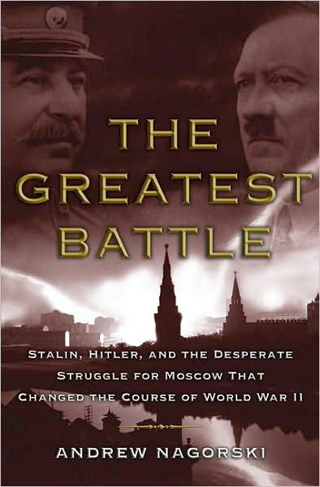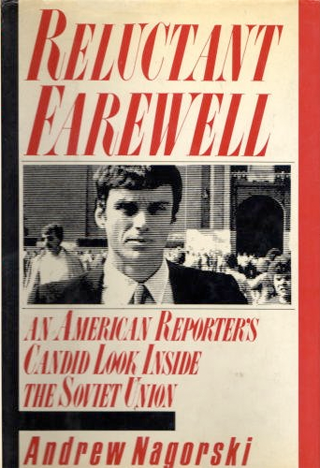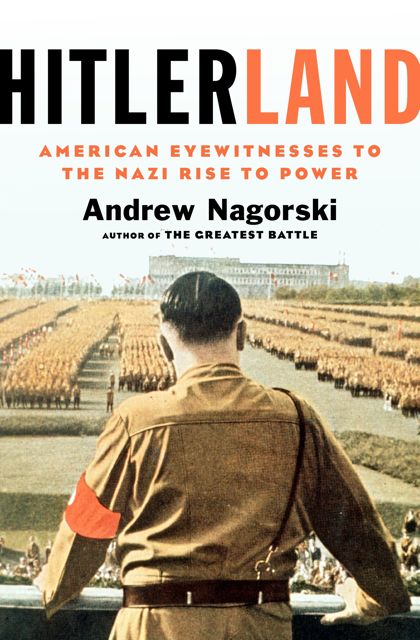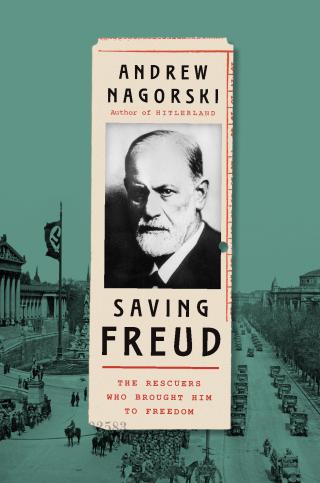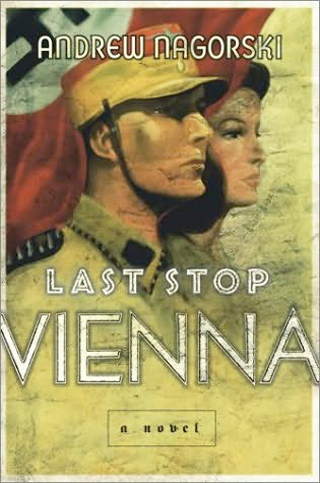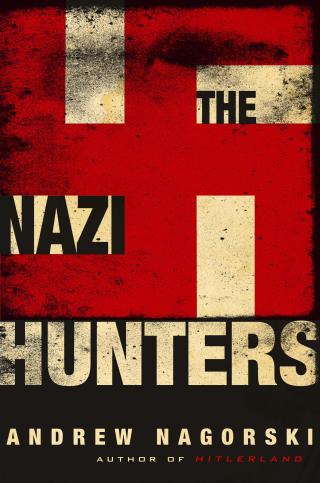The German Way of War: How two centuries of militarism came to an end on the Eastern Front.
THERE IS A GERMAN WAY OF WAR.
Its distinctive characteristic is the muster of overwhelming force and a rapid advance into enemy territory. The successive Prussian and German states were surrounded (and felt themselves threatened) by vastly larger ones and so aimed at short, decisive wars of movement: the Bewegungskrieg--though the term blitzkrieg is more common in English. To Germany's leaders, both military and civilian, the offensive must ever be immediately taken to force a decision before the geographic predicament could be made to bear.
The history of the Prussian and German state through 1945 is one in which war is the main outcome of national policy. It was the country's principal export over two centuries. War was more than just "politics by other means"; it was, as the Comte de Mirabeau noted in 1788, "the national industry of Prussia." Though he formulated it most neatly with his quip that: "Where some states possess an army, the Prussian army possesses a state."
The operational excellence of the German and Prussian general staffs is the stuff of hundreds of excellent military histories. But this brilliant style of war, shaped by geographic and historical circumstance, masked an unhealthy strategic shortcoming: an inability to see national war as the last resort, sometimes even an unnecessary one.
They forced war on other nations, and with the exceptions of the quick wars of unification against Austria in 1866 and France in 1871, their military skill battered their own state into submission. Frederick the Great began the Seven Years War by marching into Saxony; Wilhelm II sent his corps into Belgium and Russia in hopes of maintaining German industrial and social prosperity; and Hitler repeatedly used the army as the crutch for mounting the steps in his climb to global power. Each ended in disaster. The German state never existed as anything other than a militaristic enterprise, which is why its skill led to repeated defeat and, ultimately, to its own devastation in 1945. That this final devastation originated out of victory is only one of the many ironies of German history.
In April 1941, Germany was master of Europe. She faced only an isolated and nearly helpless Great Britain. With time and effort, Britain could call on imperial reserves, but, since the abandonment of Greece and Crete, she had no means of meeting the German army in battle. Hitler had brilliantly employed both war and the threat of war to reach this height. Once he brought Britain to the peace table, created a permanent defensible barrier in the east, and settled the grand matter of Bolshevism, Germany would permanently dominate Europe and be--in Hitler's mind--one of three great global powers.
It was all bound up in Hitler's calculations. He felt that Britain fought on because she looked to the Soviet Union for eventual support. The Jews were behind it all and so he must settle all these questions once and for all in, yes, a rapid war of movement. The army would topple the Bolshevik regime, restore the terms of Brest-Litovsk, truly isolate Britain, and give the SS the scope for murdering and exiling the Jews.
That war would come in the east was never a question for Hitler or his generals. He had been calling for it from his earliest preaching. Less than a month after France formally surrendered to Germany, and with the preparations for an invasion of Britain underway, Hitler ordered the drawing-up of plans for an invasion of Russia in the spring of 1941. On December 18, 1940, Directive No. 21 authorized Operation Barbarossa.
The Soviet Union, too, was manically preparing for war, expanding the Red Army and producing innovative weapons like the T-34 tank and the Katyusha rocket-launcher. But Stalin did not want it to come for years. To keep the 1939 Hitler-Stalin pact in place, he was fully prepared to make huge concessions in 1941. Stalin assumed all the rumors of war were German saber-rattling in hopes of gaining the Baltic littoral as a defensive barrier against Russia and some of the fertile land of the Ukraine. Hitler could have had a great deal for the asking: Stalin had calculated Hitler's objective correctly, but not the genocidal ambitions, and so failed to grasp that Hitler's principal instrument of state was an army. He negotiated only if he thought the army was too weak to win.
The German invasion of the Soviet Union began on June 22, 1941. It involved three million men: 152 divisions in three army groups, 3,350 tanks, 2,000 airplanes, 7,000 pieces of artillery, 600,000 motorized vehicles, and 625,000 horses. The initial efforts matched such numbers. In three weeks, Army Group Centre advanced 400 miles and captured the whole of Belorussia. Russian armies lost nearly 5,000 tanks, nearly 10,000 artillery pieces, and 1,700 planes. The victories at Bialystok and Minsk were each comparable to the German victory over the combined French and British armies in May 1940.
German plans called for the destruction of the Red Army west of the Dnieper and Dvina Rivers--to prevent it from escaping into the hinterland of Russia--and the capture of Smolensk, the land bridge to Moscow. All went well, though the distances and the minimal Soviet infrastructure quickly caused trouble with the strategic schedule as the panzer divisions awaited the slow infantry and supplies. And Smolensk held out for 63 days.
Still, the German leadership was suffused with a sense of complete victory. Eleven days after the invasion began, the army chief of staff, Franz Halder, made a famous entry in his diary: "I am therefore not exaggerating when I say that the campaign against Russia was won in 14 days." This isn't the mad logic that it might seem in retrospect. The General Staff's rule of thumb was that a nation could produce two divisions (30,000 soldiers) for each million of its population. The Soviet Union prewar population was 190 million, and so should have produced an army of six million soldiers in 384 divisions. By September, Soviet dead and prisoners exceeded four million. In the first six months of fighting, the German army achieved 12--repeat, 12--great encirclements on a par with the victories at Sedan in 1871 and the Ardennes in 1940.
If Barbarossa had been a war game, all would have been over. Yet the Russians didn't play by quite the same rules. On August 11, Halder would write:
Overall, it is clearer and clearer that we have underestimated the Russian colossus, which had prepared itself for war with an utter lack of restraint which is characteristic of the totalitarian state. This is as true in the area of organization as it is of the economy, the area of transport and communications, but above all to pure military power. At the start of the war, we reckoned on some 200 enemy divisions. Now we have already counted 360. These divisions are definitely not armed and equipped in our sense, and tactically they are in many ways badly led. But they are there.
THE GERMANS DIDN'T HAVE A WAY to win the war if the Russians were willing to keep fighting. The Barbarossa plan supposed that, if the army groups won big battles and the SS killed the intelligentsia in large numbers, the state would collapse. The problem of enemy capitulation as a strategy is that it requires not the killing of large numbers of your opponent's armies but the desertion of your opponent's soldiers. The Germans lost in 1918 because, after Erich Ludendorff's spring offensives failed and killed a huge number of German soldiers, the appearance of four million fresh American troops, fighting with an enthusiasm not seen on the Western Front since 1915, broke the morale of the German army. Governments lose the will to fight when they lose the way to fight, the contrast between France and Britain in 1940: The vast French army quit and the tiny British one did not.
Hitler and his generals were relying on the Russians' welcoming them as liberators. They believed in this so implicitly that they never bothered to gather the operational intelligence to discern if it was true. In his 1952 memoir, Panzer Leader, Heinz Guderian recalled an old Russian general in Orël after the city fell to his troops in October 1941: "If only you had come 20 years ago we should have welcomed you with open arms. But now it is too late. We were just beginning to get on our feet and now you arrive and throw us back 20 years so that we will have to start from the beginning all over again. Now we are fighting for Russia and in that cause we are all united." The Germans also made little attempt to win the hearts and minds of the Russians, diverting all resources in the captured territories back to Germany, executing hundreds of thousands, and leaving the rest to starve.
This lack of a coherent strategic plan cannot simply be blamed on Hitler, as Germany's surviving generals were keen to do after the war. The Barbarossa plan, developed by the General Staff, called for a lightning three-month campaign that reached a line stretching from Rostov, along the Volga, to Archangel. This was from 750 to a thousand miles deep into Russia. There were no terms under which such a campaign was physically possible for an army that employed 3,350 tanks but 600,000 horses. Broken into three prongs, the campaign was successful in its most basic objectives--killing Soviet soldiers in battles of encirclement and executing Jews and subversive elements in the wake of the army's progress--but never came close to reaching its military objectives.
Germany's military leaders had been beguiled by success and by ideology. They believed Hitler when he said they would win easily, and they planned accordingly. Hitler fostered an air of competition amongst his military planners. It encouraged bold ideas and discouraged critique. As the German army was restored in the 1930s, its culture became politically aggressive as well. It was no longer focused on standing readiness to repel on two fronts--the culture inherited from Frederick--but employing Bewegungskrieg as an instrument of a global political policy. When Erich von Manstein's plan to invade France through the Ardennes proved breathtakingly successful, despite evidence that France was the stronger and better-prepared military power, hope replaced realistic expectation completely.
Barbarossa exposed the problem. The two dominant forces in the German state--Hitler and the army--achieved their purpose to no discernible gain. The Russians kept fighting, and the Germans kept getting further down the logistical road. The sheer success of the Germans in surrounding and cutting off Russian armies meant lengthy and costly mop-up operations--and underestimation of the problem of prisoners added to the troubles. The Russians may have been disorganized, badly led and armed, but they fought, and the toll of German machinery and men was increasingly burdensome. By August, the German advance had slowed from 20 miles a day to 5. It was obvious that the campaign could not continue on three fronts, and resources were focused away from Army Group Centre and the drive on Moscow to pursue the attacks on Leningrad in the north and Kiev and the Ukraine to the south, which would allow Army Group South to envelop Moscow from behind.
This is a moment much debated by historians. In their postwar memoirs, Germany's surviving military leaders propounded a theory that, by delaying the drive on Moscow, Hitler cost them the war. This "Lost Victory" is widely believed in and the stuff of popular military history books and the many what-if books the History Book Club likes to try to sell me: If only Hitler had allowed his generals to push forward, they would have been victorious.
There are two problems. The first is that the redirection was called for in the original invasion plan: A pause was viewed as necessary to reconstitute the divisions battered by the fighting and for the supply lines to catch up. The second is that there is no evidence that the capture of Moscow would have led to Soviet defeat. Yes, Moscow was the center of authority in a totalitarian country, but the regime survived other heavy blows. Moscow's industry had been moved east, and the Soviet government had planned for evacuation. Considering the battering German troops had taken in five months of fighting, and the weakness of supply lines, it is just as likely the Battle of Moscow would have been the 1941 version of the Battle of Stalingrad.
What's more interesting is how the Lost Victory thesis originated. In the 1950s, it began to look like the U.S. Army might have to fight over the same ground and against the same enemy as Hitler's army. American planners began accumulating reports from surviving German generals on how the fighting went. In all, 2,500 reports were written by 700 different generals in a project overseen by none other than Franz Halder. Beyond the U.S. desire for information, there was a secondary effort at rehabilitating the German army, establishing it as an entity separate from Nazism. NATO commanders wanted German help--in the form of a new German army, the Bundeswehr--defending Western Europe, and the founding of the Bundeswehr required officers from the old army.
The climate called for exonerating the German army. In stepped generals like Halder, Guderian, and Manstein, with bestselling memoirs that portrayed an honorable German military fighting bravely and being defeated by Hitler's madness, not Red Army troops. When Dwight D. Eisenhower was touring Germany as the first head of NATO in 1951, he issued a statement drawing a line between the German army and Hitler: "I have come to know that there is a real difference between the regular German soldier and officer and Hitler and his criminal group. For my part, I do not believe that the German soldier as such has lost his honor." (This is from the new Myth of the Western Front: The Nazi-Soviet War in American Popular Culture by Ronald Smelser and Edward J. Davies II.)
The two-month pause before the assault on Moscow is the key to the Lost Victory theory. But it bears remembering that the German strategy for invading Russia was focused on destroying Soviet divisions. The campaigns in the north and south were huge successes. A case can be made that the envelopment of Kiev in late September was the greatest feat of German arms in any war. By early October, Leningrad and Sevastopol still held out, but they were sealed off by German troops and the regions around them were firmly in German control. The drive on Moscow, code-named Typhoon, was to begin again. But its goal was less the Soviet capital than the next good place to kill Russian soldiers.
Moscow was a place the Red Army was prepared to defend in force. Nearly two million German soldiers were mustered with 14,000 guns and a thousand tanks. The panzers went on the attack on September 30 and the main assault, by straight-legged infantry pulling their guns with horses, began on November 2. What followed was another pair of textbook-perfect battles of encirclement: Vyazma and Bryansk, where 1.25 million Soviet troops were cut off and more than a million captured or killed. The route to Moscow was open, the Luftwaffe was pounding the capital, and the Soviet leadership was struggling to find troops to defend it.
But the Germans were struggling, too. The Russian rasputitsa ("the time when roads dissolve") had set in, and it was increasingly difficult to advance at all, much less on a timetable, or to supply forward units. Even Hitler realized that the war would not be over in 1941. But instead of pulling back to defensive lines and preparing to wait out winter in safer quarters, the Germans pushed on: Generals like Hermann Hoth and Fedor von Bock wanted the glory of capturing Moscow, though Bock in his diary wondered how an army was to fight a war of movement when it took 24 horses to pull a single artillery piece.
Typhoon ground to a halt until the winter came and freed the German army of the trouble of mud, but the Russian winter brought an astounding new set of problems: Guns jammed as their oils weren't viscous in such cold, fires had to be lit under a tank's oil pan each morning, and soldiers lacked winter uniforms. By mid-November, the Germans were only 40 miles from Moscow, but they were scarcely advancing thanks to stubborn Soviet resistance and the exhaustion of their ill-supplied troops. The Napoleonic resonance of being caught deep in Russia with winter coming on wasn't lost on Germany's highly intellectualized students of war.
Nor were the German afflictions lost on the Soviet leadership, which sensed that the enemy was stretched to breaking. Soviet units had been able to hold their ground more tenaciously and use the superiority of the T-34 tank to advantage. The lull in fighting allowed them to bring more armored divisions from the Manchurian frontier. Stalin even dared to order the traditional public celebration of the Russian Revolution with a military parade in Red Square on November 7. Units marched in review and then straight on to the front.
The Red Army also had its first successes: securing the road over Lake Lagoda, Leningrad's sole supply line, and then on November 29 recapturing Rostov in the south. The stage was set: On December 4 and 6, the Russians counterattacked north and south of Moscow. The Germans fell back. For 34 days the Red Army kept up the attack across a front of almost 600 miles, forcing the Germans back between 50 and 150 miles. Hitler's order to soldiers to die where they stood, against his generals' advice, saved the situation, though at great cost. The German army lost a half-million soldiers and 1,500 tanks. Hitler purged the army's leadership and placed himself in direct control of operations.
The Russian counterattack was a stirring moment for a battered nation, and a great victory, but the Red Army still had another year of painful lessons to learn before it mastered mechanized warfare. The fresh troops from Siberia had dispersed an exhausted opponent, one almost beyond the power of resisting. When the Germans took the field again in spring 1942 they quickly won victories at Kharkov and Kerch as resounding as those of the first months of Barbarossa. What can't be overstated, though, is the difference of six months: When the lines stabilized at the end of December 1941, Germany was facing three enemies, two of which had nearly endless reserves to throw into total war.
MOSCOW IS ONE OF THE DEFINING battles of World War II, the first legitimate defeat dealt to the German army. So it is hardly surprising that two new books focus on this epic encounter: Andrew Nagorski's The Greatest Battle and Rodric Braithwaite's Moscow 1941.
Braithwaite is a former British ambassador in Moscow, and the extent of his knowledge and engagement with the city and country is evident on every page. This is a marvelous portrait of a people taken to war by a barbaric regime against a barbaric invader. One of the heroes of Moscow 1941 is Konstanty Rokossovski, the most able of the Soviet generals. He was denounced during the purges of the late 1930s, but refused to "confess"--even under torture. The case dragged on as they sought his confession until, in March 1940, he was released as part of a general amnesty for officers. Braithwaite repeats "an oft-repeated story." Called in to see Stalin, Rokossovski was greeted:
"Well. Rokossovski, I don't seem to have seen you around for some time. Where did you get to?"
"I was arrested, Comrade Stalin. I was sitting in prison."
"A fine time you chose to go to prison!" Stalin laughed and got down to the business of the day.
Moscow 1941 is full of such moments. It is a work of military history that balances the social, artistic, and political. Andrew Nagorski is unfortunate in his timing, for his good book is completely overshadowed by Braithwaite's great one. Nagorski is a well-regarded foreign correspondent who knows Russia from his postings, but The Greatest Battle bears too many of the marks of journalism: treating oral history and archival with equal weight, jumping from the general to the specific and back, presenting the anecdotal in favor of the analytical. He has simply engaged less profoundly than Braithwaite, and his material is less integrated; the end result jumps hither and yon amongst subjects, some unnecessary. (Is a consideration of Hitler's and Stalin's sexual skills relevant, or pages on the family who embalmed Lenin?)
The place where Nagorski does score is in including the 1942 fighting where the Russians confronted dug-in German units. Stalin's expectation was to relieve both Leningrad and Sevastopol and win the war immediately. His troops suffered for the ambition. Nagorski is following Russian historians (and Marshal Zhukov's lead) in dating the Battle of Moscow from late September to the spring offensives, and he gives a fuller picture of the fighting before both armies settled down to await the spring thaw. (Where neither book scores is in depicting the great Soviet evacuation: More than 1,500 factories were packed up and moved by rail--and another 500 by truck--while trains moved 2.5 million soldiers to the front. It was an extraordinary feat, equal to anything done by the troops before Moscow.)
Nagorski and Braithwaite are both popularizers, part of the torrent of publishing on the war in the east which has followed the opening of Soviet and East German archives and the surprising international success of -Antony Beevor's superb Stalingrad (1998). Popularizers build out archival scholarship with human interest from survivors' accounts and oral history. Sometimes this is done with originality and brilliance, but more often it just buries better works, whose main flaw is no longer being new. I think in this regard of the indefatigable David Glantz, a former U.S. Army officer who has spent decades bringing a critical mass of Soviet documentation on the war into English, including making translations of the Red Army staff's own studies of battles like Kursk and Lvov, and writing deeply detailed accounts of the Red Army at war. When Titans Clashed: How the Red Army Stopped Hitler (1995) contains a first-rate operational narrative of Typhoon and the Soviet counteroffensives that isn't any less clear for being much shorter than Nagorski and Braithwaite.
(The majority of Glantz's books are published by the University of Kansas Press, which has a dynamite program of scholarship on World War II. One of their regulars is Robert Citino, whose Death of the Wehrmacht: The German Campaigns of 1942 picks up where Nagorski and Braithwaite leave off, telling the story of the German army's recovery from the disaster outside of Moscow. It focuses on just seven months: from the phoenix-from-the-ashes victories at Kharkov and Gazala in May 1942 to the shattering defeats of December at Stalingrad and Alamein.)
IN ENGLISH, THE MODERN STUDY OF the war between Hitler's Germany and Stalin's Russia began 30 years ago with John Erickson's Road to Stalingrad: Stalin's War with Germany (1975). With its follow-up, The Road to Berlin (1983), Erickson's remains the best--deepest, clearest--overall account of the war on the eastern front and can be recommended to any reader wanting to know how the war was fought. While the last 20 years have brought reams of information to light, they don't fundamentally alter Erickson's picture of the fighting.
"We knew, pretty well, how the war was won. But now we know infinitely more about how it was run." These are the words of a former student of Erickson's, Chris Bellamy, whose Absolute War: Soviet Russia in the Second World War is a lively and resoundingly clear account of how the war was planned and managed. His interest is what set victory and defeat in motion for both sides, and his book is one of the very best single volumes yet written about the Nazi-Soviet conflict. It's an achievement made all the more impressive by Bellamy's willingness to share the credit: In his preface he refers to Absolute War as a "modern" history rather than a "new" one, as he acknowledges standing on the shoulders of Erickson and a great deal of ongoing archival and scholarly work in both German and Russian.
Absolute War is not a full picture of the war: We are on page 497 of a 690-page book when the battle for Stalingrad begins. Bellamy emphasizes 1941 and 1942, as these were the years when the course of the war was set and are most informed by the latest scholarship. Bellamy's focus is on leadership and decisionmaking, and it complements Erickson's books in every way. Bellamy is particularly skilled at presenting troves of information and analysis in digestible fashion:
In terms of the Second World War as a whole, it could be argued that Stalingrad was not the turning point because once the United States became involved, Germany had no chance of winning, anyway. From that point of view
7 December 1941, whether in eastern front terms, with the Moscow counteroffensive, or in global terms, with Pearl Harbor, was the turning point. However, from December 1941, while it had gained a breathing space, Russia could still lose--or just collapse, as by all the normal rules it should have done in 1942. Stalingrad was the last of a series of checks, which progressively narrowed German options. The first was Smolensk, in July 1941, which fatally delayed the German advance. The next was Moscow in December 1941. Then there was the evacuation and re-establishment of Soviet industry--the "economic Stalingrad." Next came Hitler's decision in July 1942 to split Operation Blau [the summer 1942 offensive] and, furthermore, to let himself be diverted to the lesser aim of capturing Stalingrad, rather than the Caucasus, the oilfields, and access to the wider world. At each point there was less room for maneuver. After the catastrophic defeat at Stalingrad, with German forces and those of their allies stretched to the limit, there was no hope of a German victory in the east.
If I have any complaint, it is that Bellamy has a weakness for deadpan comments: "The Japanese did their own, ill-advised version of Barbarossa, and attacked the greatest military and industrial power of the twentieth century, the United States. A bad move, as it turned out." Or "He was not a happy field marshal." This overwriting tic disturbs an otherwise excellent text, though it is more than offset by one of the great boons of recent military history publishing: Absolute War has a sufficiency of maps. Here, in the depths of Russia where they are most needed, a publisher--three cheers for Alfred A. Knopf--has spent the money on dozens of operational maps.
What comes through on every page of Absolute War is the utter inhumanity of the German-Soviet war. The Germans began in barbarism and the Russians replied in kind. The numbers are difficult to digest. The German army left 4 million men on the battlefields of Eastern Europe, but they killed 27 million. The Red Army lost 11.5 million soldiers, and 15.5 million civilians died in the territories occupied by the German army. Nearly 10 Russians died each minute that the war lasted, 14,000 each day. Bellamy quotes the words of a German lieutenant describing the Battle of Stalingrad: "Animals flee this hell; the hardest stones cannot bear it for long; only men endure."
In his November 6, 1941, speech marking the anniversary of the Russian Revolution, Stalin vowed that the Soviet Union would give back in kind: "The German invaders want a war of extermination against the peoples of the USSR. Well, if they want a war of extermination, they shall have it."
Moscow was still under threat as he spoke, but Stalin's vow would be fulfilled. In four years of terrible slaughter, the Red Army did not just defeat Hitler and National Socialism, but also put an end to Prussian militarism. It was a Soviet victory over something that had menaced Europe for two centuries. Stalin was a barbarous man, and in the end, that is what it took to finally draw the curtain on the German Way of War.
Robert Messenger is a senior editor at THE WEEKLY STANDARD.

